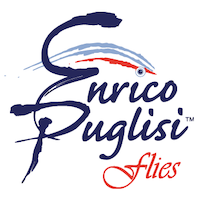Basic Fly Tying Skills Video Instruction
Basic Fly Tying Playlist on YouTube

Our Basic Fly Tying videos provide simple, concise instruction to those who are new to fly tying or want to brush up on their skills. This instruction is skills based, with each short video focusing on a specific skill or set of skills. Videos can be viewed individually, for help with a particular skill, or as a series. Put together, our hope is that these videos help new tyers, both locally and in other areas, to get started tying flies. Learning these skills will allow you tie a wide variety of patterns, from basic to more complex.
1: How to Put a Hook in a Vise

Putting a hook in a vise is a basic part of tying a fly, and something that those of us who have been tying for a while take for granted. For a new tyer, figuring out the right angle, how tightly to clamp the hook in, and other details can be daunting. This video will show you how to adjust and secure hooks in a Renzetti or Dyna-King fly tying vise, and includes information on the proper angle, how deep to insert the hook and how tight the vise should be.
2: How to Set Up and Adjust a Fly Tying Bobbin

A bobbin is one of the most basic fly tying tools and every tyer should know how to set them up to match their individual preference. This primarily means knowing how to adjust tension by bending the arms and/or wrapping the thread around the bobbin arms.
3: How to Start Thread on a Hook

It looks easy, and it is once you've done it a few times, but getting the thread started on a hook is a bit tricky when you're just getting started. Learn how to start thread on a hook and how to lay down an even thread base.
4: Which Direction Should You Wrap Thread when Tying a Fly?

The direction in which you wrap thread around a hook doesn’t necessarily matter, but make sure you are consistent. Typically, materials should be wrapped around the hook in the same direction as the thread. Most right handed tyers wrap clockwise around the hook (when viewed from the eye end), with left handed tyers wrapping counter-clockwise.
5: Essential Knots: Tying the Half Hitch and Whip Finish

The half hitch and whip finish are used to secure thread while tying a fly. They are considered basic skills but can be difficult to learn. When possible, we prefer to teach them in person. If you have trouble with either knot, we recommend you re-watch that segment of the video, look at other videos that may explain these knots differently, or, better yet, get help from someone who can show you in person.
6: How to Control your Thread

Tying flies is much easier when you can place thread wraps right where you want them with just the right amount of tension. This video will show you how to control thread tension, and the length of thread between your bobbin and the hook, both of which will help you place controlled wraps.
7: How to Manage Marabou and Other Loose Materials

Loose materials, like marabou, arctic fox and craft fur, can be difficult to control and tie in where you want them. This video shows how to gather materials together to create a small tie-in point. It also shows how to use “The Pinch” to place materials exactly where you want them on the hook.
8: How to Work with Estaz and Other Roped Material

Estaz, standard chenille and similar roped materials are convenient and easy to use. Here are a few tips, from tying in to wrapping to finishing at the head of the fly, that will make it even easier.
9: How to Use the Finger Triangle

Many of our favorite fly tying materials have lots of body and movement, both in the water and at the fly tying desk, and can be difficult to control when adding to a fly pattern. The Finger Triangle will allow you to pull errant fibers back out of the way so you can continue with your fly.
10: Trimming Materials for a Smooth Body

Most of the creatures we try to imitate with flies are naturally tapered front to back, and we usually want our flies to have a similar shape. This can be difficult when tying in bulky materials. Cutting a taper in the butt ends of materials before wrapping them down will help you give your flies a natural taper.
11: How to Tie in Mono Eyes

Dumbbell style monofilament eyes are used in many patterns, from tarpon flies to damsel flies. They give the fly the look you want without added weight. With the right techniques, mono eyes can be tied in quickly, securely, and exactly where they should be. Too many wraps, or wraps in the wrong place, can deform the eyes, folding them around the hook.
12: How to Tie in Flash

It’s hard to find a simpler material to add to your flies than strands of flash. And yet there are a number of tricks that will help you to add it in more quickly, more efficiently, and exactly where you want it. We show our preferred way to get flash out of the bag, how not to mess it up, and several ways to tie it in.
13: How to Apply Head Cement

Head cement applied to thread wraps after the whip finish will make your flies much more durable. It can be difficult to get head cement where you want it without making a mess. Using a bodkin or a needle applicator, rather than a nozzle or brush, will allow you to add head cement precisely where you want it.
14: Tight Thread Wraps and Breaking Thread

Tight wraps make durable flies. Lots of loose wraps just make a spongy mess. Learn how to tell when you are really wrapping tightly.
15: Fixing a Thread Break

If you tie flies, you will break thread. This doesn't mean you need to start the whole fly over from the beginning. Hand in hand with wrapping your thread tightly comes fixing thread breaks.
16: Tying in Lead Eyes

Tying in lead eyes isn’t complicated, but it is difficult to get them wrapped in securely. Tight wraps, and the right kinds of wraps, will help you get your eyes set in place and make sure they don’t move.
17: Tying a Yarn Crab Body

Yarn crab flies are great looking and catch fish, but getting the yarn secured in place neatly can be difficult. Use this simple process to get yarn segments tied in quickly, easily, and securely.
18: Tying in Legs

Silicon and rubber legs add movement to your flies and help you catch more fish. Here are a few easy ways to tie them in right where you want them.
19: Tying in a Single Post Weed Guard

If you’re not losing flies, you’re probably not catching fish. Still, it’s nice to lose fewer flies and still catch fish. A properly constructed weed guard will help with this. There are many ways to tie weed guards. We show two related methods for tying in single post (or single prong) monofilament weed guard. These weed guards can be added while tying a fly or, if there's enough room behind the eye, can be added to previously tied flies. Our favorite tools for creating weed guards, which we used in this video, is the Xuron FF1 combination cutter / short nose plier. It is available for sale on our website.
20: How to Tie in Matched Feathers

Many flies use matched feathers for tails and/or wings. Tying in matched feathers requires that you know how to choose the right feathers, know how to match them up, and are able to secure them on the hook exactly where you want them.
21: Palmering Feathers

Many flies, from classic tarpon flies to the Wooly Bugger, use palmered, or wrapped, feathers as a primary element. Palmering feathers isn’t hard but choosing the right feathers and learning a few essential techniques will help you do it better and more efficiently.
22: Tying in Bucktail

Bucktail is one of the more common materials used in tying warmwater and saltwater flies. The Clouser minnow, often considered a “beginner” fly, is made primarily of bucktail. Bucktail is not, however, particularly easy to work with. With a few simple techniques and some practice you’ll be tying bucktail in securely and cleanly, right where you want it.














